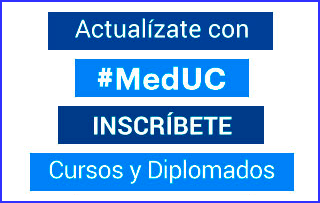Latrodectismo. Caso clínico y revisión de la literatura
DOI:
https://doi.org/10.11565/arsmed.v42i3.1003Palabras clave:
Latrodectismo, mordedura de araña, neostigmina, ciudadResumen
El latrodectismo es un cuadro clínico causado por la mordedura de una araña del género Latrodectus spp., ampliamente distribuido en todo Chile continental. Generalmente las mordeduras se asocian a faenas agrícolas. El veneno del género Latrodectus contiene α-latrotoxina, una neurotoxina que actúa a nivel presináptico del sistema nervioso autónomo aumentando la liberación de acetilcolina.
El cuadro clínico es inespecífico y hasta en un tercio de los casos ocurren síntomas sistémicos. El diagnóstico es clínico y depende del antecedente de la mordedura por una araña con un cuadro clínico compatible. El pronóstico es favorable: se reporta una letalidad entre 0 y 6%. El manejo es esencialmente sintomático, principalmente analgésico.
Presentamos el caso de un hombre de 62 años, proveniente de Santa Cruz, VI región, trabajador en una plantación de trigo. Consulta por dolor torácico asociado a mialgias generalizadas y diaforesis. Por sospecha de latrodectismo, se administra neostigmina con buena respuesta clínica.
Descargas
Citas
Aguilera M, D’Elía G & Casanueva ME. (2009). Revaluation of Latrodectus Thoracicus Nicolet, 1849 (Araneae: Theridiidae): Biological and Phylogenetic Antecedents. Gayana (Concepción); 73, 161-171. DOI: 10.4067/S0717-65382009000200001
Clark R, Wethern-Kestner S, Vance M & Gerkin R. (1992). Clinical presentation and treatment of black widow spider envenomation: a review of 163 cases. Ann Emerg Med; 21, 782-787. DOI: 10.1016/S0196-0644(05)81021-2 PubMed PMID: 1351707.
Clark R. (2001). The safety and efficacy of antivenin Latrodectus mactans. J Toxicol Clin Toxicol; 39, 125-127. PubMed PMID: 11407497.
Dart R, Bogdan G, Heard K, Bucher Bartelson B, Garcia-Ubbelohde W, Bush S, Arnold T, Clark R, Hendey GW, Holstege C & Spradley E. (2013) A randomized, double-blind, placebo-controlled trial of a highly purified equine F(ab)2 antibody black widow spider antivenom. Ann Emerg Med; 61, 458-467. doi:10.1016/j.annemergmed.2012.10.008. PubMed PMID: 23380292.
Hoyte C, Cushing T & Heard K. (2012). Anaphylaxis to black widow spider antivenom. Am J Emerg Med; 30, 836.DOI: 10.1016/j.ajem.2011.03.017. PubMed PMID: 21641165.
Isbister GK & Gray MR. (2003). Latrodectism: a prospective cohort study of bites by formally identified redback spiders. Med J Aust; 179, 88-91. PubMed PMID: 12864719.
Isbister G & Fan H. (2011). Spider bite. Lancet; 378, 2039-2047. DOI: 10.1016/S0140-6736(10)62230-1. PubMed PMID: 21762981.
Isbister G, Page C, Buckley N, Fatovich D, Pascu O, MacDonald S, Calver L, Brown S & RAVE Investigators. (2014). Randomized controlled trial of intravenous antivenom versus placebo for latrodectism: the second Redback Antivenom Evaluation (RAVE-II) study. Ann Emerg Med; 64, 620-628. DOI: 10.1016/j.annemergmed.2014.06.006. PubMed PMID: 24999282.
Jelinek GA. (1997). Widow spider envenomation (latrodectism): a worldwide problem. Wilderness Environ Med; 8, 226-231. DOI: 10.1580/1080-6032(1997)008[0226:WSELAW]2.3.CO;2 PubMed PMID: 11990169
Juckett G. (2013). Arthropod bites. Am Fam Physician; 88, 841-847. PubMed PMID: 24364549.
Jurvetson S. (2006). Latrodectus mactans ed. 5 Lm. Disponible en: Wikimedia Commons https://upload.wikimedia.org/wikipedia/commons/f/f6/Latrodectus_mactans_5.jpg. [citado 27 de noviembre de 2017]
Kara H, Ak A, Bayir A & Avci A. (2013). Reversible myocarditis after spider bite. BMJ Case Rep; 8, 2013. DOI: 10.1136/bcr-2013-008957 PMID: 23572268 PMCID: PMC3645769
Shackleford R, Veillon D, Maxwell N, LaChance L, Jusino T, Cotelingam J, Carrington P. (2005). The black widow spider bite: Differential diagnosis, clinical manifestations, and treatment options. J La State Med Soc. 167:74-78. PubMed PMID: 25978056
Maretić Z. (1983). Latrodectism: variations in clinical manifestations provoked by Latrodectus species of spiders. Toxicon; 21, 457-466. DOI: 10.1016/0041-0101(83)90123-X PubMed PMID: 6353667.
Nordt S, Clark R, Lee A, Berk K & Lee Cantrell F. (2012) Examination of adverse events following black widow antivenom use in California. Clin Toxicol (Phila); 50, 70-73. DOI 10.3109/15563650.2011.639714. PMID: 22175789
Saracco S & de Roodt A. (2010). Latrodectismo. Rev Medica Univ; 6, 1–13. Link: http://bdigital.uncu.edu.ar/objetos_digitales/3676/saraccormu6-3-2010.pdf
Schenone FH. (2003). Cuadros tóxicos producidos por mordeduras de araña en Chile: Latrodectismo y loxoscelismo. Rev Med Chile; 131, 437-444. DOI: 10.4067/S0034-98872003000400013 PMID: 12870240
Shackleford R, Veillon D, Maxwell N, LaChance L, Jusino T, Cotelingam J & Carrington P. (2015). The black widow spider bite: differential diagnosis, clinical manifestations, and treatment options. J La State Med Soc; 167, 74-78. PMID: 25978056
Taucare-Ríos A. (2012). Las arañas sinantrópicas peligrosas de Chile. Rev Med Chile; 140, 1228–1229. DOI: 10.4067/S0034-98872012000900019 PMID: 23354648
Ushkaryov Y, Rohou A & Sugita S. (2008). Alpha.-Latrotoxin and its receptors. In Pharmacology of Neurotransmitter Release, pp 171-206 ed Südhof T & Starke K. Springer, Berlin, Heidelberg. DOI: 10.1007/978-3-540-74805-2_7. PubMed PMID: 18064415; PubMed Central PMCID: PMC2519134.
Descargas
Publicado
Cómo citar
Número
Sección
Licencia
Derechos de autor 2017 ARS MEDICA Revista de Ciencias Médicas

Esta obra está bajo una licencia internacional Creative Commons Atribución-CompartirIgual 4.0.
A partir del 1 de octubre 2023, los autores/as conservan sus derechos de autor y garantizan a la revista el derecho de primera publicación de su obra, la que estará simultáneamente sujeta a la Licencia CC BY-SA 4.0 (Ver declaración de Acceso Abierto).








